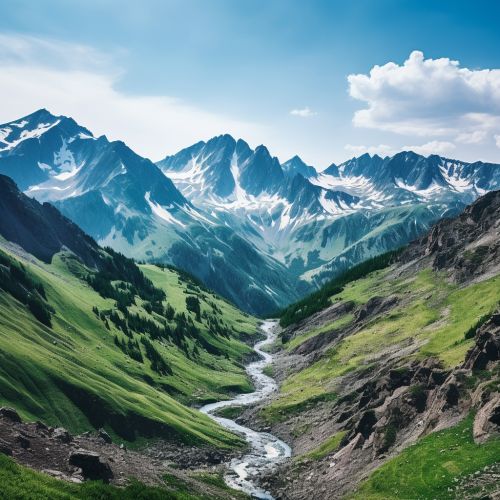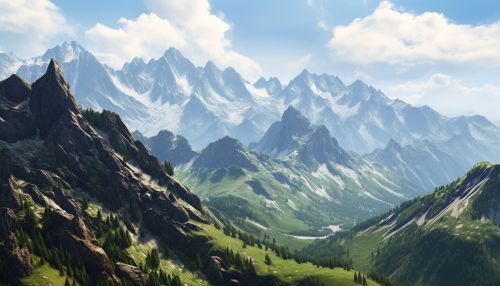Alpine Orogeny
Introduction
The Alpine Orogeny refers to a significant phase of mountain building activity in the late Mesozoic and Cenozoic eras, resulting in the formation of the Alpine mountain system. This mountain system stretches across Europe, from the Atlantic Ocean to the Pannonian Basin, and includes the Pyrenees, the Alps, the Dinarides, the Hellenides, the Carpathians, and the Balkan Mountains.
Geological Background
The Alpine Orogeny is a result of the convergence of the African and Eurasian tectonic plates. This convergence began in the late Cretaceous period and continues to this day. The process involved the closure of the Tethys Ocean, a large body of water that once separated the two continents.


Plate Tectonics and the Alpine Orogeny
The Alpine Orogeny is a classic example of plate tectonics at work. The African plate, moving northwards, collided with the Eurasian plate. This collision caused the denser oceanic crust of the Tethys Ocean to subduct beneath the lighter continental crust of the Eurasian plate. The intense pressure and heat at these subduction zones led to the formation of magma, which rose to the surface and solidified to form the mountain ranges we see today.
Stages of the Alpine Orogeny
The Alpine Orogeny can be divided into several stages, each characterized by different geological processes and resulting in distinct features in the mountain ranges.
Cretaceous Period
The initial stage of the Alpine Orogeny began in the late Cretaceous period, around 100 million years ago. During this time, the Tethys Ocean began to close, and the first signs of mountain building activity were evident.
Eocene Epoch
The Eocene epoch, which occurred between 56 and 34 million years ago, marked a significant phase in the Alpine Orogeny. During this time, the first major mountain building events occurred, resulting in the formation of the Pyrenees and parts of the Alps.
Oligocene and Miocene Epochs
The Oligocene and Miocene epochs, from 34 to 5 million years ago, saw the main phase of the Alpine Orogeny. This period was characterized by intense mountain building activity, resulting in the formation of the majority of the Alpine mountain system.
Pliocene Epoch to Present
From the Pliocene epoch to the present day, the Alpine Orogeny has continued at a slower pace. The mountain ranges have been subject to erosion and weathering, which have shaped the landscape we see today.
Impact of the Alpine Orogeny
The Alpine Orogeny has had a profound impact on the geography, climate, and biodiversity of Europe. The mountain ranges act as a barrier to weather systems, creating distinct climatic zones on either side. They also provide a diverse range of habitats, supporting a wide variety of plant and animal species.
